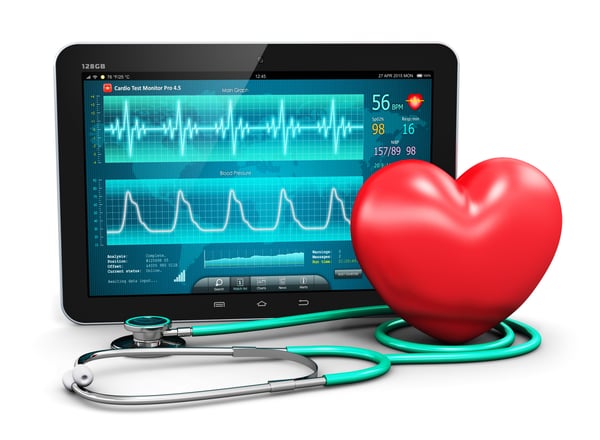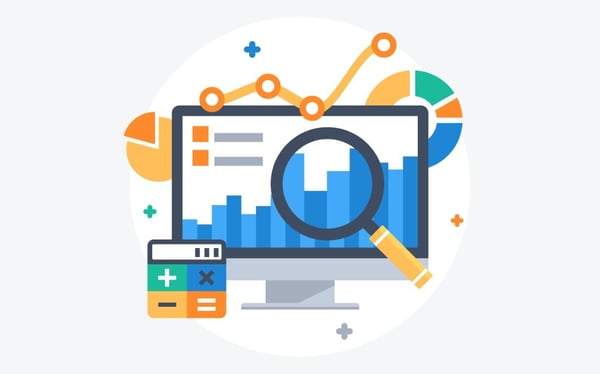News Alert: New ePCR Integration Simplifies EMS Data Management and Enables Better Care Coordination
Let’s Get to the Heart of the Matter: What You May Have Missed on the ZOLL Data Blog in February
About 610,000 people die of heart disease in the United States every year – that’s one in every four deaths
Was this information valuable?

About 610,000 people die of heart disease in the United States every year – that’s one in every four deaths. And about 47 percent of sudden cardiac deaths occur outside the hospital. As an EMS professional, how can you help reduce deaths associated with heart events? During the month of February, we focused the majority of our blog content around American Heart Month, delving into the important role data can play in regard to the quality of resuscitation and STEMI care. Here’s a brief recap in case you missed these great blog posts:
Looking at STEMI Care Through the Lens of Systems
 How do communities establish effective systems of care? There are some common denominators in places that have been getting excellent results. Mic Gunderson, consultant with the American Heart Association, discusses how to bring these elements into your system.
How do communities establish effective systems of care? There are some common denominators in places that have been getting excellent results. Mic Gunderson, consultant with the American Heart Association, discusses how to bring these elements into your system.
Data Says: Switch Out Compressors to Optimize CPR Results
When performing high-quality CPR, one of the most important factors is compressor fatigue. Data and evidence show that compressions are now one of the biggest factors in survival. So how do you guarantee you are always delivering the highest-quality resuscitation? John Tobin with the Mesa (Arizona) Fire/Medical Department explores the benefits of using CPR feedback data to improve your crews’ overall quality of care.
When an EMS Professional Becomes the Patient; How High-Quality Care Saved My Life
David Bryson, an EMS professional who also happens to be the survivor of a heart event knows firsthand how important it is to deliver the highest form of quality care. Bryson tells his story and shares why he has come to believe that a successful outcome to a heart event takes a strong EMS system that starts with a 911 call and rapid dispatch and continues with good EMS prehospital and hospital care.
 One of the largest fire departments in the United States, the Los Angeles (LA) County Fire Department has 174 fire stations, 73 paramedic squads and many more paramedic assessment units. It services an area of 2,300 square miles that includes all unincorporated parts of LA County and 58 contract cities, all of the county’s beaches except Long Beach, and Catalina Island. In 2016, LA County Fire Department’s call volume was approximately 350,000. Of those calls, 300 to 350 calls per month are for cardiac arrest. What happened to their CPR performance and patient outcomes when the fire department started collecting and analyzing data on those calls?
One of the largest fire departments in the United States, the Los Angeles (LA) County Fire Department has 174 fire stations, 73 paramedic squads and many more paramedic assessment units. It services an area of 2,300 square miles that includes all unincorporated parts of LA County and 58 contract cities, all of the county’s beaches except Long Beach, and Catalina Island. In 2016, LA County Fire Department’s call volume was approximately 350,000. Of those calls, 300 to 350 calls per month are for cardiac arrest. What happened to their CPR performance and patient outcomes when the fire department started collecting and analyzing data on those calls?
6 Dashboards to Improve Clinical Outcomes
 Fire and EMS performance leaders are adopting business intelligence dashboards to gain insight into their data to improve performance and monitor compliance across departments. These interactive dashboards can provide quick answers to those big questions from a quick glance and may be tailored for a specific role and display metrics targeted for a single point of view or department. Rob Humphreys walks through ZOLL’s clinical dashboards and their recommended usage.
Fire and EMS performance leaders are adopting business intelligence dashboards to gain insight into their data to improve performance and monitor compliance across departments. These interactive dashboards can provide quick answers to those big questions from a quick glance and may be tailored for a specific role and display metrics targeted for a single point of view or department. Rob Humphreys walks through ZOLL’s clinical dashboards and their recommended usage.
Empower EMS to Deliver CPR Correctly with CaseReview
ZOLL’s CaseReview gives you at-a-glance CPR dashboards, case management tools and aggregate trending tools to simplify a code de-briefing and support CPR quality of care improvement initiatives. Matt Vawter from ZOLL provides a summary of how recent software upgrades extend the functionality of CaseReview and enhance the overall value of the ZOLL solutions for CPR quality improvement.
Related Posts
How STAT MedEvac Connected Device, Software, and Data Technology To Enhance QA and Elevate Care
Podcast: 4 Ways ePCR Software Can Relieve EMS’ Biggest Headaches
ZOLL Pulse Blog
Subscribe to our blog and receive quality content that makes your job as an EMS & fire, hospital, or AR professional easier.
ZOLL Pulse Blog
Subscribe to our blog and receive quality content that makes your job as an EMS, fire, hospital, or AR professional easier.




